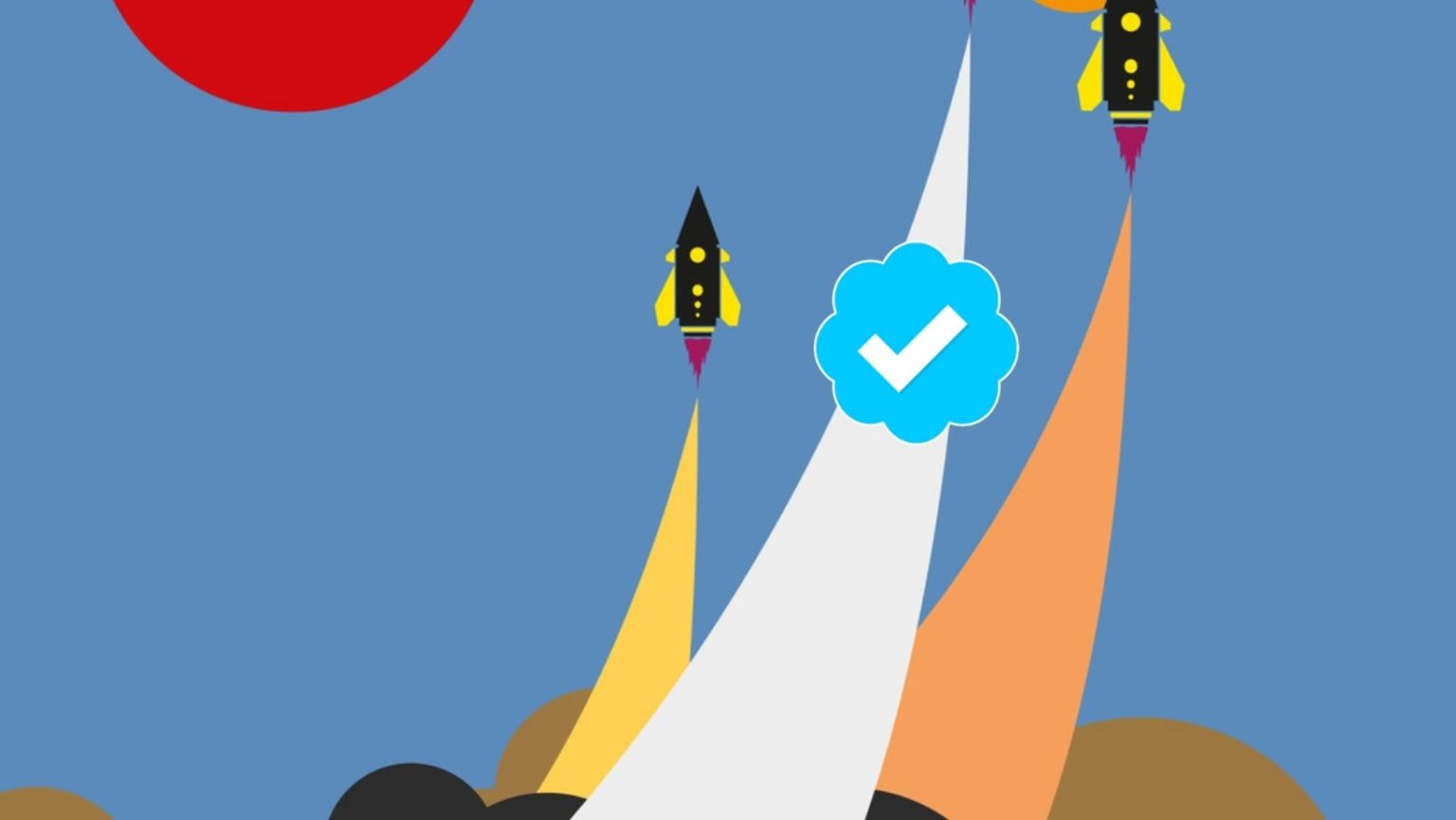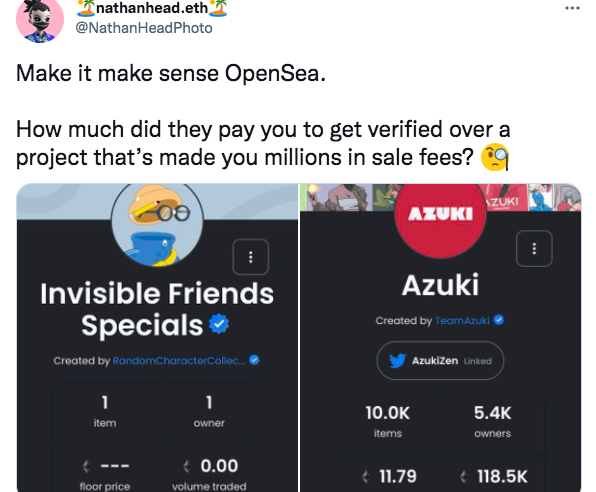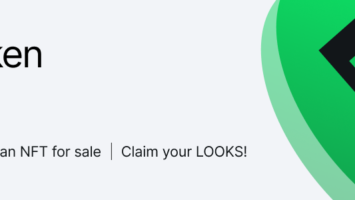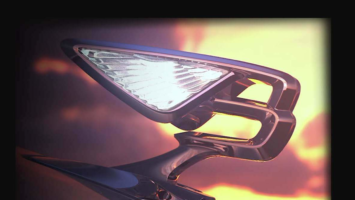Once again, crypto Twitter is calling out OpenSea for its verification process. NFT influencer Nathan Head summed up the community’s demand with these words: make it makes sense. To drive his point, he gave Invisible Friends Specials as an example. The upcoming charity auction has zero trading volume yet it is already verified. Meanwhile, Azuki with over 118,500 ETH or approximately $317 Million tradeable volume remains unverified.
Before we dig dip into this issue, let’s review the existing verification policy of OpenSea. According to the support page, if you are not a high-profile public figure or organization, your collection must first reach a trading volume of 100 ETH. This means that highly notable collections are not always required to meet those “100 ETH” criteria.
Unfortunately, the implementation of this is very erratic.

Status Quo: OpenSea’s Verification Process
Nathan Head is not the first NFT influencer to slam the platform’s verification process. Beanie also described it as the “most puzzling” thing he’s seen lately. He pointed out that there are “projects with $100m+ volume not verified after pleading for weeks.” Meanwhile, “brand new projects with hardly any volume appear to get verified immediately.” In conclusion, for him, “it makes no sense at all.”
The community quickly jumped into the thread to express their thoughts. Julien Dorland, the CMO of Mekaverse, shared his personal experience with the OpenSea team and how he got their project verified. He said, “Together with OpenSea, I took down 250+ fake collections before mint and formed a strong connection with the team. They reserved the “MekaVerse” collection name and verified it before we revealed the artwork. Nothing was paid; simply having good connections with their team.”

Unfortunately, not all projects had that pleasant experience. The community went to give examples of projects that remain unverified despite pulling in million in trading volume. Jeremy Booth, the founder of Bushido NFT shared, that they can’t get their project verified despite having 271 ETH trading volume. Perhaps the best example of OpenSea’s “faulty” verification process is Aliens Frens. It has 19800 ETH trading volume or around $53 Million yet it remains unverified.
Meanwhile, others defended the Invisible Friends Specials over allegations of special treatment. Some users highlighted that this is a charity drop and not the official connection. So the verification checkmark is a prerequisite to prevent scams and ensure that funds will really go to charity. In addition, the team has an official partnership with OpenSea.
Call for a Decentralized Platform
For some, the problem is not just the verification process but OpenSea as an entity. This issue resurrected calls for a decentralized marketplace. OpenSea is a centralized marketplace meaning they have full control over transactions in the platform such as verification. Some users feel that this goes against crypto’s campaign for decentralization.
Aside from verification, asset recovery is also a hot topic. The platform was recently under fire for freezing stolen NFTs worth $1.9 Million. The platform is receiving so much backlash to the point that some users are calling it BrokenSea.
Despite the criticisms, OpenSea remains King. In fact, it opened the year by announcing a successful Series C funding. This round elevated the leading NFT marketplace at a $13.3 billion post-money valuation. In addition, the platform is now part of the elusive Decacorn status, merely five months since receiving its Unicorn title!
However, new players are coming in to challenge OpenSea’s throne. For example, LooksRare and Coinbase’s NFT Marketplace. As a rule of thumb, more competitors mean better user experiences.
Are you tired of missing important NFT drops?
Just check out our NFT Calendar !
We summarize the biggest news of the day :
All investment/financial opinions expressed by NFTevening.com are not recommendations.
This article is educational material.
As always, make your own research prior to making any kind of investment.






















Comments (No)